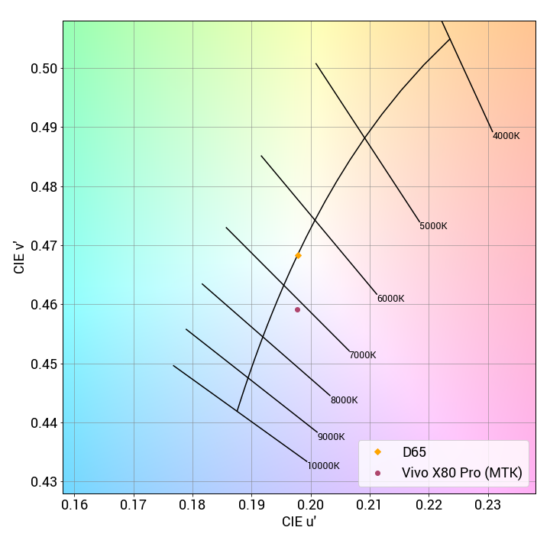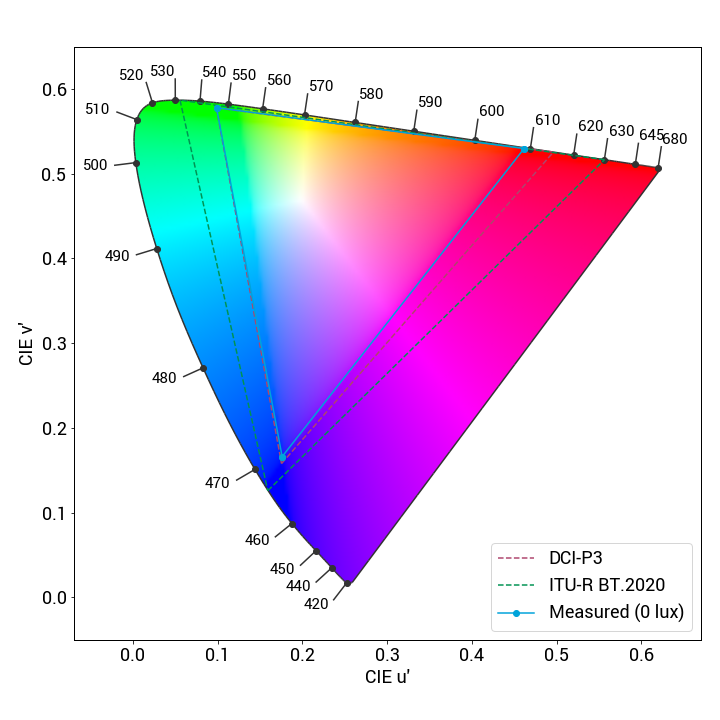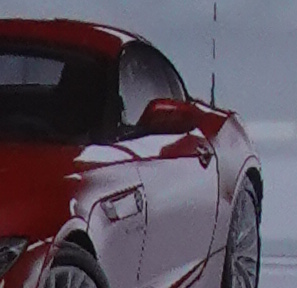We put the Vivo X80 Pro (MediaTek) through our rigorous DXOMARK Display test suite to measure its performance across six criteria. In this test results, we will break down how it fared in a variety of tests and several common use cases.
Overview
Key display specifications:
- 6.78 inches AMOLED LTPO, (~90.7% screen-to-body ratio)
- Dimensions: 164.57 x 75.3 x 9.1 mm (6.48 x 2.96 x 0.36 inches)
- Resolution: 1440 x 3200 pixels, (~518 ppi density)
- Aspect ratio: 20:9
- Refresh rate: 120 Hz
Scoring
Sub-scores and attributes included in the calculations of the global score.
 Vivo X80 Pro (MediaTek)
Vivo X80 Pro (MediaTek)

134
display
123
Apple iPhone 14 Pro Max
Best: Apple iPhone 14 Pro Max (160)
161
Sony Xperia 5 IV
Best: Sony Xperia 5 IV (163)
145
Samsung Galaxy S22 Ultra (Snapdragon)
Best: Samsung Galaxy S22 Ultra (Snapdragon) (162)
134
Huawei P40 Pro
Best: Huawei P40 Pro (155)
120
OnePlus 9
Best: OnePlus 9 (165)
136
LG Wing
Best: LG Wing (149)
Position in Global Ranking

16
th
1. Apple iPhone 14 Pro Max
149
4. Apple iPhone 13 Pro Max
145
12. Samsung Galaxy S22 Ultra (Snapdragon)
136
14. Samsung Galaxy S22+ (Exynos)
135
16. Samsung Galaxy Z Flip4
134
16. Samsung Galaxy S22 Ultra (Exynos)
134
16. Vivo X80 Pro (Mediatek)
134
19. Samsung Galaxy Z Fold4
133
19. Samsung Galaxy S22 (Snapdragon)
133
19. Samsung Galaxy S22 (Exynos)
133
19. Vivo X80 Pro (Snapdragon)
133
24. Samsung Galaxy S21 Ultra 5G (Snapdragon)
131
24. Samsung Galaxy S21 Ultra 5G (Exynos)
131
28. Samsung Galaxy S21 FE 5G (Snapdragon)
130
33. Samsung Galaxy Z Fold3 5G
129
33. Samsung Galaxy Note20 Ultra 5G (Snapdragon)
129
39. Samsung Galaxy Z Flip3 5G
128
39. Samsung Galaxy Note20 Ultra 5G (Exynos)
128
42. Apple iPhone 12 Pro Max
127
48. Vivo X70 Pro (MediaTek)
125
48. Vivo X60 Pro 5G (Snapdragon)
125
63. Oppo Reno6 Pro 5G (Snapdragon)
123
63. Samsung Galaxy S20 Ultra 5G (Exynos)
123
67. Apple iPhone SE (2022)
122
80. Apple iPhone 11 Pro Max
116
85. Samsung Galaxy A52 5G
111
89. Samsung Galaxy A52s 5G
110
94. Xiaomi Redmi K50 Gaming
107
97. Samsung Galaxy A53 5G
104
103. Microsoft Surface Duo
99
105. Nubia RedMagic 7 Pro
97
106. Xiaomi Mi 10T Pro 5G
95
114. Samsung Galaxy A22 5G
74
115. Xiaomi Black Shark 3 Pro
69
117. Lenovo Legion Phone 2 Pro
60
Position in Ultra-Premium Ranking

13
th
1. Apple iPhone 14 Pro Max
149
4. Apple iPhone 13 Pro Max
145
10. Samsung Galaxy S22 Ultra (Snapdragon)
136
11. Samsung Galaxy S22+ (Exynos)
135
13. Samsung Galaxy Z Flip4
134
13. Samsung Galaxy S22 Ultra (Exynos)
134
13. Vivo X80 Pro (Mediatek)
134
16. Samsung Galaxy Z Fold4
133
16. Vivo X80 Pro (Snapdragon)
133
19. Samsung Galaxy S21 Ultra 5G (Snapdragon)
131
19. Samsung Galaxy S21 Ultra 5G (Exynos)
131
24. Samsung Galaxy Z Fold3 5G
129
24. Samsung Galaxy Note20 Ultra 5G (Snapdragon)
129
28. Samsung Galaxy Z Flip3 5G
128
28. Samsung Galaxy Note20 Ultra 5G (Exynos)
128
31. Apple iPhone 12 Pro Max
127
40. Samsung Galaxy S20 Ultra 5G (Exynos)
123
45. Apple iPhone 11 Pro Max
116
49. Microsoft Surface Duo
99
52. Xiaomi Black Shark 3 Pro
69
Pros
- Well-managed HDR10 video contrast, with good perceptual rendering
- Good color fidelity overall
- Uniform in both brightness and color
Cons
- Not very smooth when playing videos games
- Lacks readability under sunlight.
- Brightness is too low in nighttime conditions.
Its DXOMARK Display overall score just edging out that of its Snapdragon sibling’s, the MediaTek version of the Vivo X80 Pro is a good smartphone for both watching videos and browsing the web. It has good overall color performance — coming close to the current top score for this attribute — and shows good uniformity across the screen for both brightness and color. While the Vivo X80 Pro (MediaTek) handles artifacts well, gamers may find it lacking in smoothness. Readability suffers a bit under sunlight, however, and it is a bit dim (2 nits) in low light at night.
Test summary
About DXOMARK Display tests: For scoring and analysis in our smartphone and other display reviews, DXOMARK engineers perform a variety of objective and perceptual tests under controlled lab and real-life conditions. Note that we evaluate display attributes using only the device’s built-in display hardware and its still image (gallery) and video apps at their default settings. (For in-depth information about how we evaluate smartphone and other displays, check out our articles, “How DXOMARK tests display quality” and “A closer look at DXOMARK Display testing.”
The following section gathers key elements of our exhaustive tests and analyses performed in DXOMARK laboratories. Detailed performance evaluations under the form of reports are available upon request. Do not hesitate to contact us.
Readability
123
Apple iPhone 14 Pro Max
Apple iPhone 14 Pro Max
How Display Readability score is composed
Readability evaluates how easily and comfortably users can read still content (photos & web) on the display under different real-life conditions. DXOMARK uses its Display Bench to recreate ambient light conditions ranging from total darkness to bright sunlight. In addition to laboratory tests, perceptual analysis is also made in real-life environments.
Brightness under various lighting conditions
Contrast under various lighting conditions
Readability in an indoor (1000 lux) environment
From left to right: Vivo X80 Pro (MediaTek), Vivo X70 Pro+,Samsung Galaxy S22 Ultra (Snapdragon), Xiaomi 12T Pro
(Photos for illustration only)
Readability in a sunlight (>90 0000 lux) environment
From left to right: Vivo X80 Pro (MediaTek), Vivo X70 Pro+,Samsung Galaxy S22 Ultra (Snapdragon), Xiaomi 12T Pro
(Photos for illustration only)
Luminance uniformity measurement
This graph shows the uniformity of the display with a 20% gray pattern. The more visible the green color, the more uniform the display.
Color
161
Sony Xperia 5 IV
Sony Xperia 5 IV
How Display Color score is composed
The color attribute evaluates the capacity of the device to accurately reproduce colors. The measurements taken are for fidelity, white point color, and gamut coverage. We perform color evaluations for different lighting conditions to see how well the device can manage color in the surrounding environment. Colors are measured using a spectrophotometer in a controlled lighting environment. Perceptual analysis of color rendering is against the reference pattern displayed on a calibrated professional monitor.
White point under D65 illuminant at 1000 lux
Color rendering indoors (1000 lux)
Clockwise from top left: Vivo X80 Pro (MediaTek), Vivo X70 Pro+,Samsung Galaxy S22 Ultra (Snapdragon), Xiaomi 12T Pro
(Photos for illustration only)
Color fidelity measurements
Vivo X80 Pro (MediaTek), color fidelity at 1000 lux in the sRGB color space
Vivo X80 Pro (MediaTek), color fidelity at 1000 lux in the Display-P3 color space
Each arrow represents the color difference between a target color pattern (base of the arrow) and its actual measurement (tip of the arrow). The longer the arrow, the more visible the color difference is. If the arrow stays within the circle, the color difference will be visible only to trained eyes.
Color behavior on angle
This graph shows the color shift when the screen is at an angle. Each dot represents a measurement at a particular angle. Dots inside the inner circle exhibit no color shift in angle; those between the inner and outer circle have shifts that only trained experts will see; but those falling outside the outer circle are noticeable.
Video
145
Samsung Galaxy S22 Ultra (Snapdragon)
Samsung Galaxy S22 Ultra (Snapdragon)
How Display Video score is composed
Our video attribute evaluates the Standard Dynamic Range (SDR) and High Dynamic Range (HDR10) video handling of each device in indoor and low-light conditions. We measure tone mapping, color gamut, brightness and contrast of the display. We perform perceptual analysis against our professional reference monitor (Sony BVM-HX310) to ensure that the rendering respects the artistic intent.
Video brightness at 10% APL in the dark ( < 5 lux)
Video rendering in a low-light (0 lux) environment
Clockwise from top left: Vivo X80 Pro (MediaTek), Vivo X70 Pro+, Samsung Galaxy S22 Ultra (Snapdragon), Xiaomi 12T Pro
(Photos for illustration only)
Gamut coverage for video content
The primary colors are measured both in HDR10 and SDR. The extracted color gamut shows the extent of the color area that the device can render. To respect the artistic intent, the measured gamut should match the master color space of each video.
Motion
134
Huawei P40 Pro
Huawei P40 Pro
How Display Motion score is composed
The motion attribute evaluates the handling of dynamic contents. Frame drops, motion blur, and playback artifacts are scrutinized using games and videos.
Video frame drops
These long exposure photos present the number of frame irregularities in a 30-second video. A good performance shows a regular pattern (either a flat gray image or a pull-down pattern).
How Display Touch score is composed
To evaluate touch, DXOMARK uses a touch robot and a high-speed camera to play and record a set of scenarios for smoothness, accuracy and response-time evaluation.
Average Touch Response Time Vivo X80 Pro (MediaTek)
This response time test evaluates precisely the time elapsed between a single touch of the robot on the screen and the displayed action. This test is applied to activities that require a high reactivity, such as gaming.
How Display Artifacts score is composed
Evaluating artifacts means checking for the performance, image rendering and motion flaws that can affect the end-user experience. DXOMARK measures precisely the device’s reflectance and the presence of flicker, and assesses the impact of residual aliasing when playing video games, among other characteristics.
Average Reflectance (SCI) Vivo X80 Pro (MediaTek)
Reflectance measurement (SCI)
Measurements above show the reflection of the device within the visible spectrum range (400 nm to 700 nm). It includes both diffuse and specular reflection.
Flicker Frequency Vivo X80 Pro (MediaTek)
360 Hz
Bad
Good
Bad
Great
Flicker comparison
This graph represents the frequencies of lighting variation; the highest peak gives the main flicker frequency.
Aliasing (closeup)
Vivo X80 Pro (MediaTek)
(Photos for illustration only)
Vivo X80 Pro (MediaTek) – Crop1
Vivo X80 Pro (MediaTek) – Crop 2
Vivo X80 Pro (MediaTek) – Crop3
 Vivo X80 Pro (MediaTek)
Vivo X80 Pro (MediaTek)


 16th
16th
 13th
13th


















 English
English 中文
中文

DXOMARK invites our readership (you) to post comments on the articles on this website. Read more about our Comment Policy.